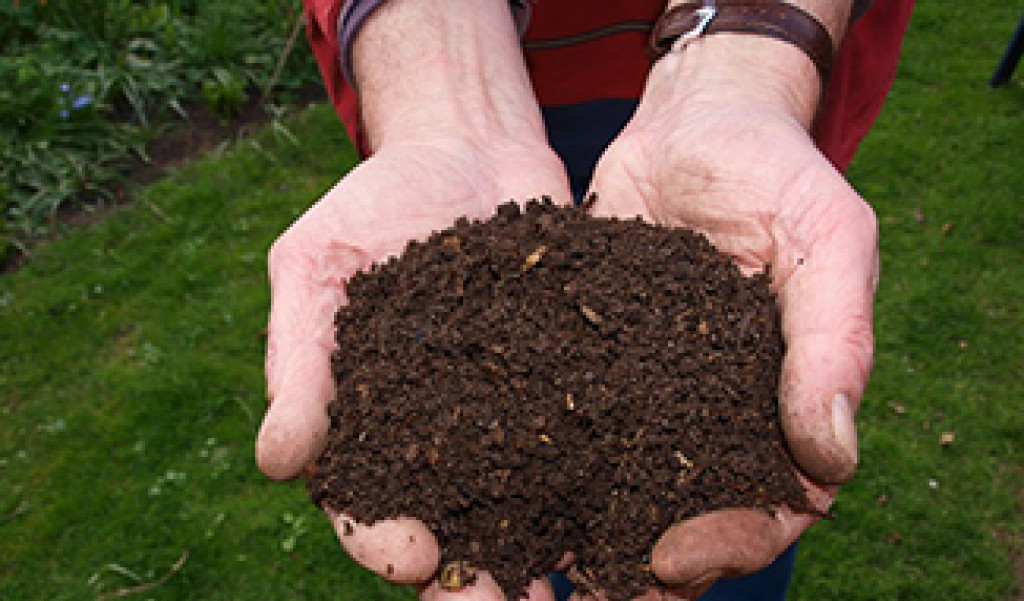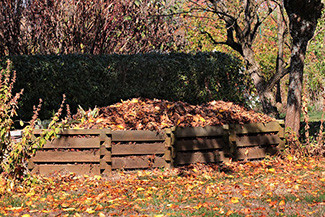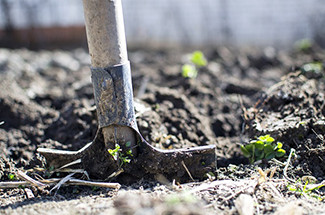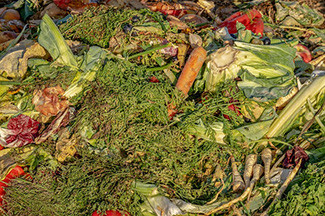If we composted many of the things we throw away, such as kitchen scraps, grass clippings, leaves, and other landscape debris, we could divert up to 28% of the trash currently going into landfills.

By composting these materials, we can reduce the amount of waste we send to landfills and produce organic matter and nutrients for our gardens, landscapes, and yards. But to have a healthy usable compost pile, it must be turned frequently.

By turning your compost pile, you'll get the right combination of air and water, distribute moisture evenly, and increase the temperature enough to kill weed seeds and pests. Mixing the materials in your pile will help the materials decompose, which produces a finished product more quickly. If the pile is too wet, turning it will improve drainage and facilitate air drying. If the pile is too dry, the materials won’t break down. Turning will help distribute the moisture.
The microorganisms in your compost pile need a certain amount of water and air to sustain them. If there is not enough air in a compost pile because of compaction, anaerobic (airless) decomposition occurs, producing an odor like that of rotting eggs.
Turning is a crucial part of achieving your compost pile’s optimum temperature. As the temperature rises above 113°F, heat-loving microorganisms will take over and put your pile in the active phase. At that stage, temperatures will reach 131 to 170°F in 1 to 3 days. These high temperatures are the key to killing weed seeds in a compost pile.

When turning your compost pile, it is important that the materials on the outside and top layers of the pile that aren’t yet decomposed are turned or rotated into the center and bottom of the pile. To do this, use a hayfork, a shovel, a compost turner, or even a tiller to pull apart the layers and restack the contents, putting the newer materials in the center where they will break down more easily. Use a ‘turning’ motion with your gardening tool or simply move the materials from the bottom to the top of the pile and give it a good stir.
Essentially, you want to mix your pile in the same way you’d toss a salad or mix up a batch of concrete. Blend the new, non-decomposed material into the existing, decomposed material to give it an even consistency.

To increase the rate of decomposition, turn the pile weekly during the summer and monthly during the winter. It takes between 90 and 120 days to prepare good compost. If you have room, make three piles so you will have one ready to use, one being tilled, and one being filled up.
Your compost pile also needs the right amount of moisture. A good rule of thumb is to have the same amount of moisture in your pile as you’d feel in a well-squeezed-out sponge. It’s moist to the touch, but it won’t yield any liquid when squeezed. If the pile is too wet, it should be turned. If the pile is too dry, you may want to re-wet the materials while turning the pile.
Turning the pile during the active phase, when temperatures reach 131 to 170°F, ensures that all the material is heated for a long enough period to kill the seeds. In general, more seeds will die the longer the temperature in the pile remains within this range.
Learn more about composting in our free publication, the Take Care of Texas Guide to Yard Care.